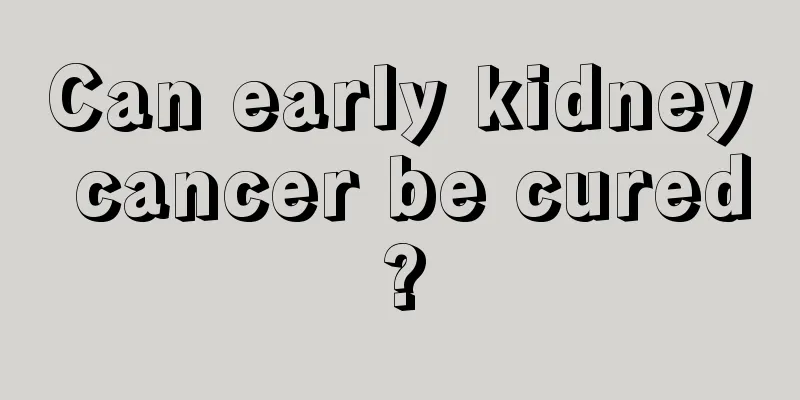What are the symptoms of vascular aging

|
Growing old is something we cannot refuse. When we are young, we say we are growing up slowly. When we reach a certain age, we say we are getting old slowly. So growing old is also a kind of growing up. Not only our appearance will change, but our organs will also change. Blood vessel aging is also one of the signs of declining body function. There are also some signs of vascular aging. What are the symptoms of vascular aging? Feeling sleepy after eating; Forget about the things you are familiar with in your daily life; The brain is unable to think creatively or accept new ideas; Feeling cold, weak, or numb in your hands and feet for a long time; Headache; Prolonged insomnia; Chest tightness, heart pain; Easy to get out of breath when carrying things and walking; It is easy to have calf pain when walking, which will be fine after a rest; Before understanding the harm of vascular aging, let's take a small test Observation: If you clench your fist for 30 seconds and then open it, will the whitening of your palm disappear immediately or will it last for a while? The first situation: After opening your palm, it will quickly return to its original color. This indicates that the blood vessels are healthy, elastic, blood circulation is normal, and the peripheral nerves are relatively sensitive. The second situation: It takes more than 20 seconds for the skin color to return to normal. If this happens, be careful, as your body may have arteriosclerosis. What are the five major hazards of vascular aging? First, vascular aging leads to decreased body function Aging of blood vessels in specific parts of the body can cause a variety of functional declines, such as carotid artery sclerosis leading to cerebral ischemia and cerebral infarction; aortic sclerosis can lead to thoracic and abdominal aortic aneurysms, which are life-threatening. Second, carotid artery sclerosis and decreased heart and brain function Carotid artery plaque mainly refers to carotid atherosclerotic lesions, most of which are arterial stenosis and are local manifestations of systemic arteriosclerosis. Patients often have sclerosis of the intracranial arteries, coronary arteries of the heart, and lower limb arteries, which lead to corresponding symptoms. Third, varicose veins, difficulty standing There are many factors that cause varicose veins. It is more common among people who do long-term manual labor or whose jobs require long periods of standing (teachers, traffic police, salespersons, barbers, chefs, etc.). The disease affects their standing and walking. Sequelae of deep vein thrombosis and arteriovenous fistula can also manifest as limb swelling and compensatory superficial varicose veins Fourth, blood vessels become brittle and hard, and their mobility decreases Hypertension, diabetes and hyperlipidemia accelerate vascular hardening, which in turn further increases blood pressure, forming a vicious cycle. Fifth, blood vessel blockage and poor memory Artery blockage can cause ischemia, necrosis or functional impairment of the organs and limbs they supply; chronic cerebral ischemia can cause drowsiness, memory loss, and inability to concentrate. |
<<: What kind of fabric is good for people who sweat a lot?
>>: Is it normal to sweat during exercise in the dog days of summer?
Recommend
Revealing how long one can live with advanced bladder cancer
How long can one live with advanced bladder cance...
Tertiary prevention of pancreatic cancer
The mortality rate of pancreatic cancer is as hig...
How to choose commonly used drugs for bile duct cancer
Drug therapy is also an important method for trea...
Bladder cancer diagnosis test items
Bladder cancer is a common malignant tumor of the...
Can I use salt water to wash my hair if I have hair loss?
Many men start to lose their hair when they reach...
Why is the singing voice suppressed
Many people like to sing in life, but some people...
What are the symptoms of advanced metastasis of nasopharyngeal carcinoma
Nasopharyngeal carcinoma is familiar to people to...
Which Chinese medicine hospital is good for rectal cancer
Now that the living standard is good and people a...
Nursing for right endometrial cancer
The psychological care of patients with endometri...
How to treat bronchial lung cancer? Revealing the common treatment options for bronchial lung cancer
Bronchogenic carcinoma can be treated with pallia...
How to dry quilts to remove mites
Mites can grow easily in both summer and winter, ...
Can running treat cervical spondylosis?
If a person suffers from cervical spondylosis, it...
What food is good for liver cancer patients? Menu suitable for liver cancer patients
Liver cancer is very scary because the early symp...
Can washing your face with milk remove acne?
Washing your face with milk has many benefits for...
What causes throat cancer
Laryngeal cancer is usually caused by bad living ...









